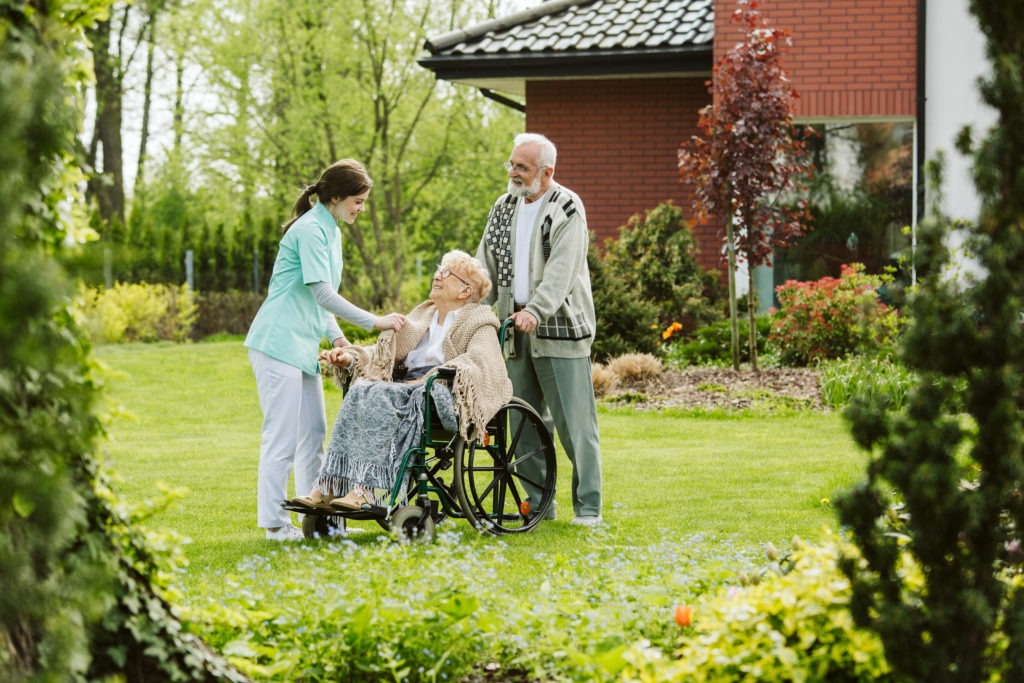
Residential Assisted Living (RAL) is an essential part of senior care, offering a unique balance of independence and support for the elderly. As the population ages, the need for these types of care facilities grows. RAL homes do more than provide medical care; they enhance senior living with personalized support and community engagement.
Understanding RAL is crucial for families contemplating this choice for their elderly relatives. Moreover, for those considering a move to such facilities, reliable assisted living movers are available to ensure a smooth transition.
Today, Residential Assisted Living stands as a beacon of hope for seniors who need help but still cherish their independence. These facilities differ from traditional nursing homes by offering a more homelike environment, customized to meet each resident’s individual needs. RAL focuses on personal care and active engagement, distinguishing it from other senior care options.
The significance of RAL in our society is immense. With increasing life expectancy, an ever-growing number of families are looking for dependable, compassionate care for their older members. Residential Assisted Living offers a dignified solution that safeguards seniors’ well-being while honoring their desire for independence. It has evolved to address the varied needs of the elderly, bridging the gap between complete self-reliance and comprehensive medical care.
Understanding Residential Assisted Living

Residential Assisted Living, as a concept, is centered around providing a supportive living environment for seniors. It’s designed for individuals who do not require the intensive care of a nursing home but need assistance with daily activities. This model of senior care is increasingly popular for its personalized approach and focus on maintaining a high quality of life.
The key difference between nursing homes and assisted living is the level of care provided. While nursing homes are equipped for more complex medical needs, RAL facilities excel in offering assistance with day-to-day tasks like bathing, dressing, and medication management. This distinction is critical for families making decisions about the type of care their loved ones need.
Understanding what Residential Assisted Living entails is crucial for those exploring senior care options. It’s a blend of independence, care, and community – tailored to each individual’s needs. Families looking for a setting where their loved ones can thrive both socially and physically often find RAL to be the ideal choice. With a focus on personal care and a homelike atmosphere, it offers a comforting alternative to more institutionalized forms of senior care.
The Benefits of Residential Assisted Living
One of the primary benefits of Residential Assisted Living is the personalized care residents receive. Each individual’s needs and preferences are taken into account, ensuring that they receive the right level of support. This personalization extends to all aspects of care, from daily activities to healthcare and nutrition, making RAL a preferred choice for many families.
Another significant advantage of Residential Assisted Living is the community environment it fosters. Unlike the isolation that can come with aging, RAL facilities provide a vibrant social setting. Residents engage in various activities, form friendships, and participate in community events, contributing greatly to their mental and emotional well-being.
Moreover, Residential Assisted Living offers peace of mind to families. Knowing that their loved ones are in a safe, caring environment, where their individual needs are met, is invaluable. The staff in these facilities are trained to handle a range of situations, ensuring that residents receive the best care possible. This comprehensive approach to senior care makes RAL a highly beneficial option for those seeking a blend of independence and support.
Choosing the Right Facility

Choosing the right Residential Assisted Living facility is a critical decision. Location is a key factor; proximity to family and familiar surroundings can significantly impact a resident’s happiness. Accessibility to local amenities and the facility’s connection to the community are also important considerations.
Staff qualifications and the staff-to-resident ratio are crucial in selecting an RAL facility. The quality of care greatly depends on the expertise and availability of staff. Facilities with well-trained, compassionate staff who are available to meet residents’ needs around the clock are ideal. This ensures that residents receive prompt and personalized care.
When evaluating facilities, it’s important to consider the range of amenities and services offered. From comfortable living spaces to recreational activities, every aspect contributes to the residents’ quality of life. It’s essential to visit these facilities, meet with staff, and get a feel for the environment to ensure it aligns with the needs and preferences of your loved one.
Cost Considerations
Discussing the cost of Residential Assisted Living is essential for families planning for senior care. The expenses can vary widely depending on location, services, and the level of care required. Understanding the average costs involved helps families budget effectively for this important decision.
Exploring payment options is a vital part of the process. While some families opt for private pay, others may rely on insurance coverage or government programs like Medicaid. It’s important to research and understand the various financial resources available to help cover the costs of RAL.
Budgeting for Residential Assisted Living requires careful consideration of both immediate and long-term costs. Families should not only look at the monthly fees but also consider additional expenses like healthcare services, activities, and special care needs. Transparent and thorough financial planning ensures that the chosen RAL facility is both affordable and conducive to the well-being of the resident.
Legal and Safety Aspects
Understanding the legal and regulatory framework governing Residential Assisted Living is crucial. These facilities are subject to state-specific licensing requirements, which ensure they meet certain standards of care and operation. Families should verify that a facility is properly licensed and compliant with all regulations.
Safety is paramount in Residential Assisted Living facilities. They are designed with the needs of seniors in mind, incorporating features like accessible bathrooms, emergency call systems, and secure premises. Regular safety drills and procedures are in place to handle emergencies, providing residents and their families with reassurance.
In addition to physical safety, legal protections are also essential. These include resident rights and privacy laws, ensuring that individuals in RAL facilities are treated with dignity and respect. Understanding these aspects helps families make informed decisions when selecting a facility for their loved ones.
The Emotional Transition

The move to a Residential Assisted Living facility is often an emotional journey for both the senior and their family. Preparing for this transition involves understanding and addressing the emotional aspects, ensuring a smooth adjustment to the new living environment.
Support from family is crucial during this time. Regular visits, involvement in care planning, and open communication help ease the emotional impact of transitioning to an RAL facility. This support network plays a key role in the well-being of the resident.
Facilities also play a part in easing the transition. Many offer counseling, orientation programs, and activities designed to help new residents acclimate and feel at home. This thoughtful approach to the emotional aspect of moving into RAL ensures that residents feel welcomed and valued from the start.
Daily Life in Residential Assisted Living
A typical day in a Residential Assisted Living facility is structured yet flexible, catering to the diverse needs and interests of residents. Daily routines often include a mix of personal care, recreational activities, and social interactions, providing a fulfilling and engaging lifestyle for seniors.
Activities in RAL facilities are designed to promote physical, mental, and social well-being. From exercise classes to art workshops, book clubs, and garden walks, residents have numerous opportunities to pursue their interests and discover new hobbies.
Socialization is a key component of daily life in RAL. Communal dining, group activities, and social events foster a sense of community, helping residents build meaningful relationships. This social engagement is essential for the emotional health and happiness of seniors, making RAL a vibrant and dynamic living option.
Healthcare Services

Residential Assisted Living facilities provide comprehensive healthcare services to meet the varying medical needs of residents. Regular health monitoring, medication management, and coordination with healthcare providers ensure that each resident receives the appropriate level of medical care.
In case of medical emergencies, RAL facilities are equipped to respond promptly. With trained staff and established protocols, they ensure that residents receive immediate attention and care. This readiness for emergencies is a crucial aspect of the healthcare services offered in RAL.
Continuity of care is also a focus in RAL facilities. By working closely with residents’ healthcare providers, these facilities ensure that each individual’s health plan is followed and adapted as needed. This integrated approach to healthcare is a significant benefit of living in a Residential Assisted Living community.
Nutrition and Dietary Needs
Nutrition plays a central role in the health and well-being of residents in Residential Assisted Living facilities. Meal plans are carefully crafted to cater to the dietary needs and preferences of each individual, ensuring that residents receive nutritious and enjoyable meals.
Special dietary requirements, whether due to medical conditions or personal choice, are accommodated in RAL facilities. From diabetic-friendly meals to heart-healthy options, the culinary staff is skilled in preparing a variety of dishes that cater to specific health needs.
The dining experience in RAL facilities is more than just about food; it’s a social event that residents look forward to. Communal dining encourages social interaction and fosters a sense of community, making meal times a highlight of the day for many residents.
Family Involvement
Family involvement is a critical aspect of life in Residential Assisted Living facilities. Families are encouraged to visit frequently and participate in activities, fostering strong bonds between residents and their loved ones.
The role of the family extends to care planning as well. Involving family members in discussions about care and daily routines ensures that the resident’s needs and preferences are fully understood and met.
Family participation in special events and celebrations within the RAL facility enhances the sense of community and belonging for residents. These moments of shared joy and connection are invaluable for both the residents and their families.








